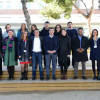
How to detect and tackle pseudoscience

Why do we tend to believe pseudoscience?
We are at a time where many people are mistrustful of experts: in climate change, in politics, and to a certain degree in health care. Due to an expanding access to information, we are exposed to both true and false information. We want to separate good science to pseudoscience because we want to pursuit the truth, we believe we should not pay for treatments that do not work, and because it might threaten welfare or life of a person, potentially preventing them from using treatments that do work.
There are three main reasons why we are tempted by pseudoscience:
- Hope is a very powerful factor, because it inspires people to take action. At the same time, it complicates things we believe and try to ignore the things we do not believe in.
- Worsening health and poor communication might result in justifying decisions that you have made because you became too invested of this area.
- Think positive message enables you to stay positive and action instead of just waiting for something to happen.
The way we are rushed through a healthcare system is like adding oil to a fire. Instead of being told an inconvenient truth where we get told news we do not want to hear in a very rushed manner, we rather want to be told a reassuring lie where we can spend some time with someone who might be telling us rubbish, but we feel loved and cared for.
The anatomy of a pseudoscience article
Pseudoscience is sometimes disguised very clever. Although there are some red flags that you can spot. A fake science article often comes from a dubious source. If there is no evidence, you cannot manage to publish it in a decent publication. It often states with a universal truth that we all agree on and draws you to it, e.g. “Exercise is good for you” or “A balanced diet is good for you”. Then, they state their case, usually that a certain product has been correlated with longer survival, although it does not mean that it is the cause of it, and they use jargon that is unnecessarily confusing.
Next, they make an extraordinary claim like a 100% cure rate. In the best case, the medical world makes claims as “We hope it will work for 30% of people” or “We’re hoping this can increase some progression-free survival” which is more realistic. Usually, a pseudoscience article provides a single-case study to ‘prove’ their point. It is often a celebrity or a close relative. They also make an excuse on why this is not standard of care yet or doctors do not want you to know it because they cannot make any money out of it.
The article ends with a referral where you can find the item they want you to buy or you are redirected to the clinic they want you to go. Last thing is that there are no references listed on the bottom of the page, other than an occasional personal quote they have made themselves, hoping to appear a trusted source.
How to deal with pseudoscience
Melanoma Patient Network Europe is very strict on dealing with pseudoscience on our forums. Nobody can put anything on the forum without declaring the source. If it is declared as fake science we take it off completely, but sometimes we use it as a lesson on why this is flagged as pseudoscience. This way, we teach people how to do their own falsification: how to nitpick at something until you cannot find anything else wrong with it. Although the difference between what is true science that has not had yet enough evidence and what is rubbish can be difficult, if patients are taught to nitpick, you can differentiate the good and the bad.
Hierarchy of scientific evidence
The pyramid of proof can be used to check the degree of evidence on an article. At the bottom of the pyramid, the opinions of clinicians or editors are listed. Even when patients are talking to their clinician, they should cite a source higher up the pyramid. Also at the bottom part are animal trials and in-vitro studies –test-tube studies. Good scientific evidence are control studies with large cohorts of patients, randomized controlled trials and lastly meta-analyses and systematic reviews.
Where to find true science
For accurate, trustworthy and up-to-date information you need the right source. This is why we press the importance of listing the source. All publications are listed according to the number of times they are cited by other clinicians or scientists. High impact factor publications like these are the New England Medical Journal, Science, Nature, The Lancet and PubMed. You also have publications derived from international conferences, such as ASCO or ESMO in the field of oncology.
How to get quality patient information
Melanoma Patient Network Europe developed a tool that is used in the Share4Rare platform to review patient information. It is divided into multiple sections and checks if information is validated, verified, and accessible. This means how enabling the source is and how it encourages patients to go out and find more information.
Fake science vs coping strategy
There is a big difference between fake science that replaces or harms treatment, and those that patients use as strategies for coping with their disease. The placebo effect works, so we should not be cruel to people and criticizing them for using certain therapies that may not have evidence. Complementary or alternative therapies are certainly something to discuss with your doctor, specialist or clinician to open up dialogue about the benefits of this. Even if a patient copes with their condition by using mindfulness – which has some proven benefits – we should also be supporting them, even if there is not sufficient evidence found for this.
You can watch the complete session of the Share4Rare webinar on fake science here.
